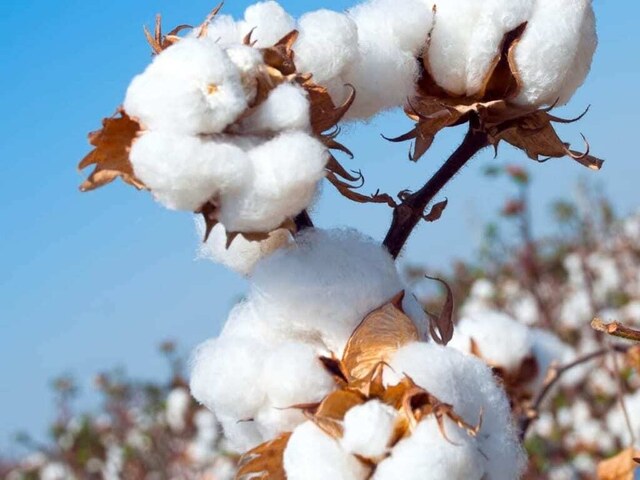LAHORE: Pakistan’s cotton industry is grappling with a significant production shortfall that threatens to undermine the country’s textile sector and economic stability, according to a comprehensive report released by the Pakistan Cotton Ginners Association (PCGA).
The PCGA report, published on August 15, 2025, reveals that national cotton arrivals have fallen to 887,401 bales this year, compared to 1,075,028 bales recorded by the same date in 2024. This represents a decline of 187,627 bales, marking a 17.45 percent decrease that has sent alarm bells ringing across Pakistan’s agricultural and industrial sectors.
The shortfall extends far beyond agricultural concerns, as cotton serves as the backbone of Pakistan’s textile industry, export earnings, and provides livelihoods for millions of farmers across the country.
Cotton arrivals in Punjab reached 369,550 bales, representing a decrease of 23,186 bales from the previous year—a 5.90 percent decline. Despite being the smallest percentage drop among major cotton-producing provinces, the reduction still poses challenges for the region’s agricultural economy.
The situation proved more dire in Sindh, where cotton arrivals plummeted to 517,851 bales from last year’s 682,292 bales. This dramatic shortfall of 164,441 bales translates to a 24.10 percent decrease, making Sindh the worst-affected province in terms of cotton production.
In contrast to the national trend, Balochistan demonstrated resilience with cotton arrivals increasing to 30,600 bales compared to 26,100 bales in the previous year. This improvement of 4,500 bales represents a 17.24 percent increase, offering a rare bright spot in an otherwise challenging scenario.
The report noted that 244 ginning factories remain operational across the country, continuing to process the available cotton despite the reduced volumes.
Punjab’s cotton sector continues to confront a multitude of threats that have severely impacted production levels. The persistent cotton leaf curl virus remains a primary concern, while destructive pests including whitefly, mealybug, and thrips have caused extensive crop damage.
Weather conditions have further complicated the situation, with recent heavy rainfall, reduced boll size and weight, and intense heat waves during June and July contributing to increased fruit shedding. These adverse conditions have not only diminished crop yields but have also severely affected farmers’ incomes, placing additional strain on the provincial economy.
Given these challenges, Punjab’s ambitious production target of 5.5 million bales appears increasingly difficult to achieve this year.
Sindh’s sharp decline in cotton output stems primarily from a nearly 35 percent reduction in cultivated area, largely attributed to water shortages during the crucial sowing period. The province’s agricultural sector suffered additional setbacks from severe heatwaves in June and July, which dealt a devastating blow to existing crops. The crisis has been compounded by the prevalence of cotton leaf curl virus, lack of access to quality high-yielding seeds, and escalating input costs. Despite these formidable challenges, production estimates for Sindh hover around 2 million bales.
The PCGA report emphasizes that Pakistan’s cotton crisis transcends agricultural boundaries, posing significant economic risks to the nation. The shortage of raw cotton threatens to disrupt the textile industry, reduce export earnings, drain valuable foreign exchange reserves, and slow down overall industrial momentum.
This scenario demands immediate national-level intervention to revive the cotton sector and prevent further economic deterioration. Head Transfer of Technology Central Cotton Research Institute Multan Sajid Mahmood while talking to Business Recorder said that the report outlines several critical measures necessary for addressing the cotton crisis which significantly increased funding for agricultural research institutions to develop high-yielding, climate-resilient, and pest-resistant cotton varieties specifically adapted to local conditions.
Sajid said that comprehensive support including access to quality seeds, subsidized fertilizers, and assured water availability to make cotton cultivation a profitable venture for farmers.
He called for implementation of support price announcements for cotton to protect farmers from market exploitation and ensure fair compensation for their efforts.
The PCGA report concludes with a stark warning: without timely and effective investment in the cotton sector, Pakistan faces the prospect of spending billions of dollars on raw material imports, further widening the trade deficit and deepening the country’s financial crisis. He further said reviving the cotton industry is directly linked to reviving the national economy, requiring coherent policies, long-term strategic planning, and farmer-friendly measures as an urgent priority.
The report serves as a clarion call for policymakers, agricultural experts, and economic planners to collaborate on comprehensive solutions that can restore Pakistan’s position as a major cotton producer and protect the livelihoods of millions dependent on this critical agricultural sector.
Copyright Business Recorder, 2025


